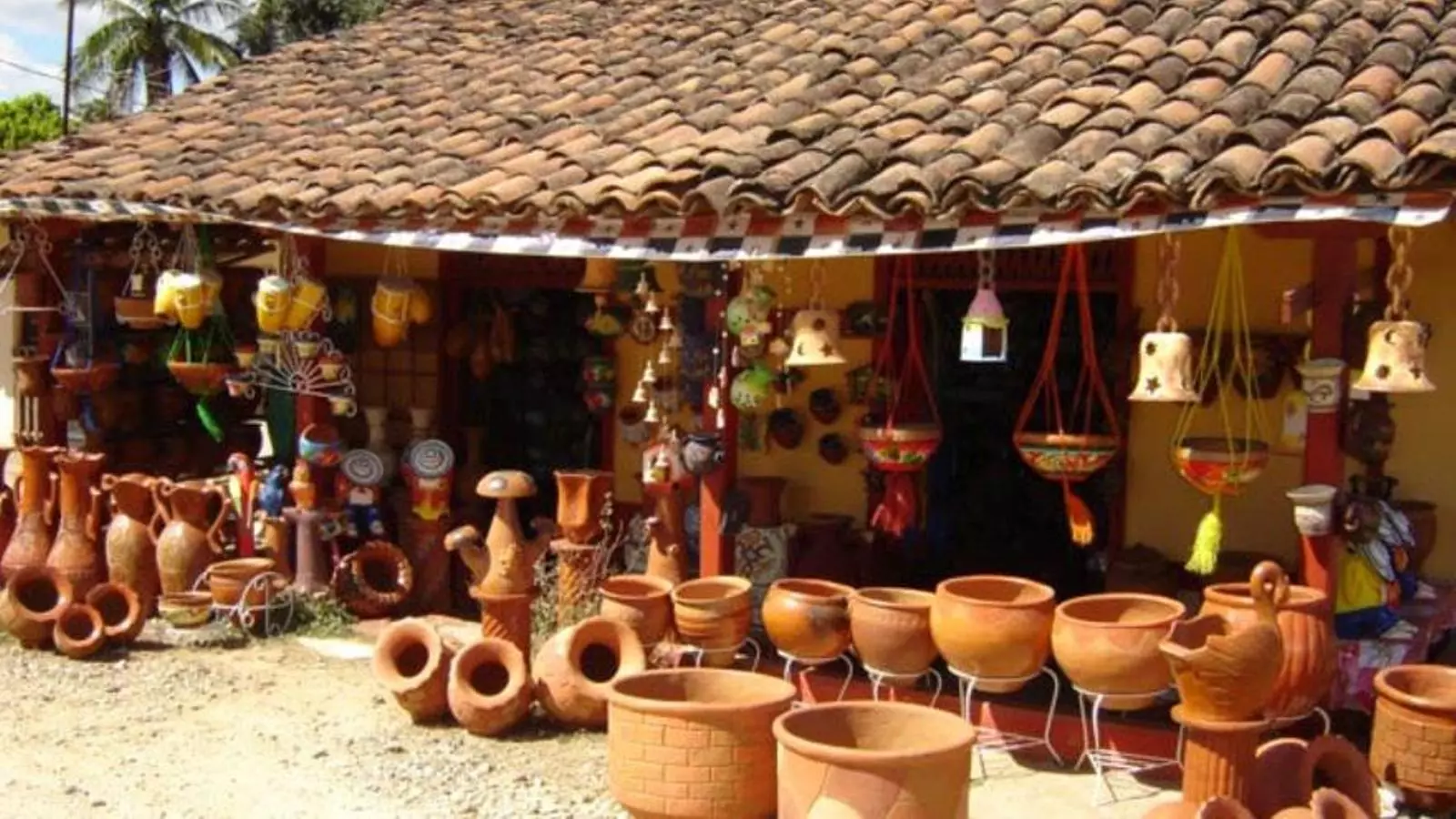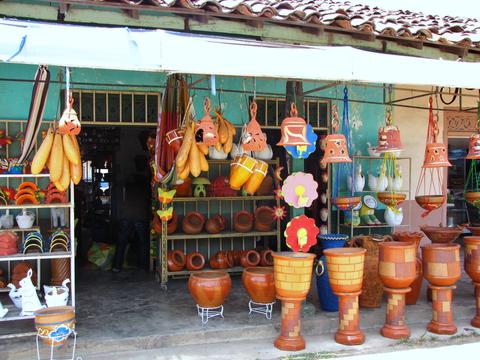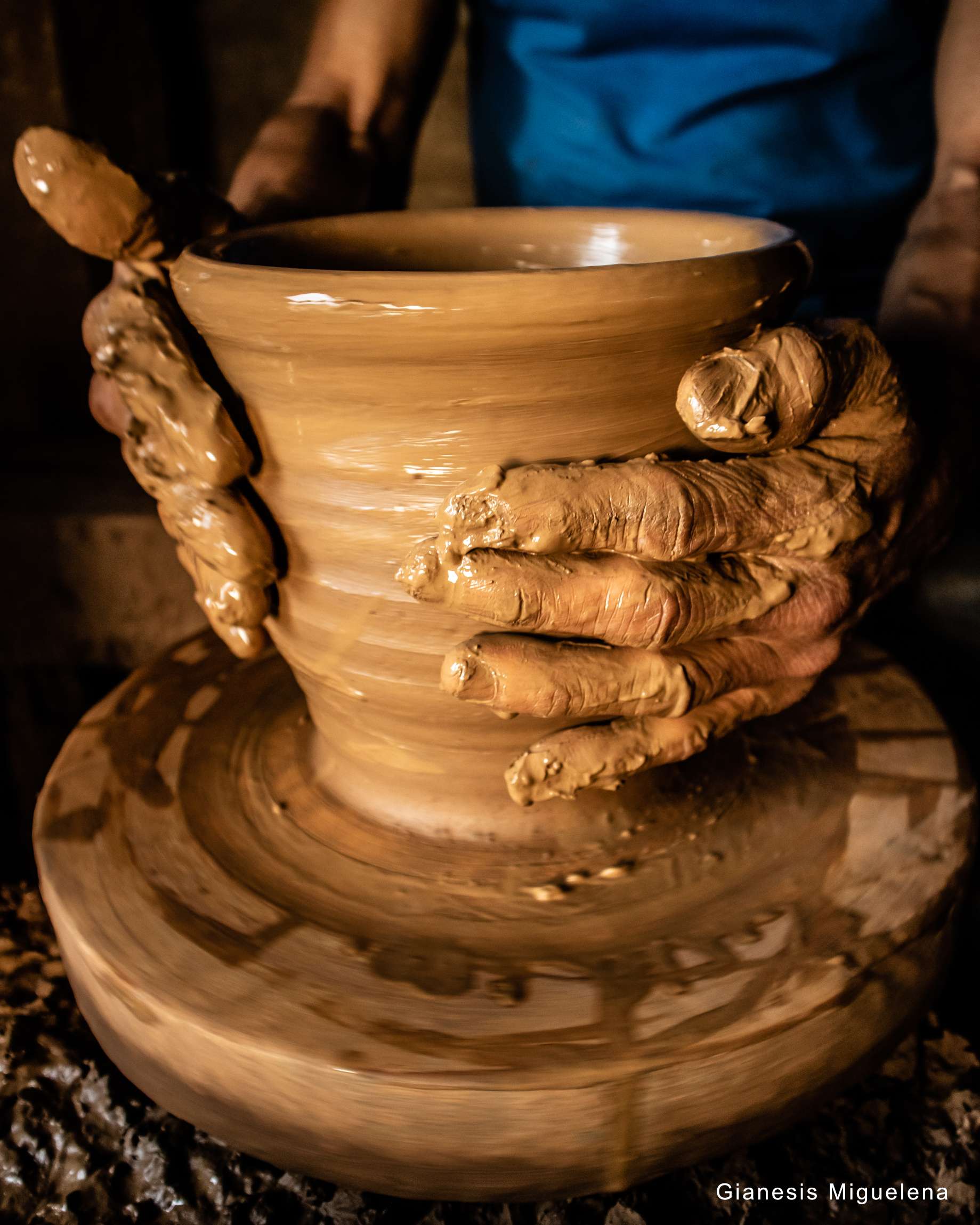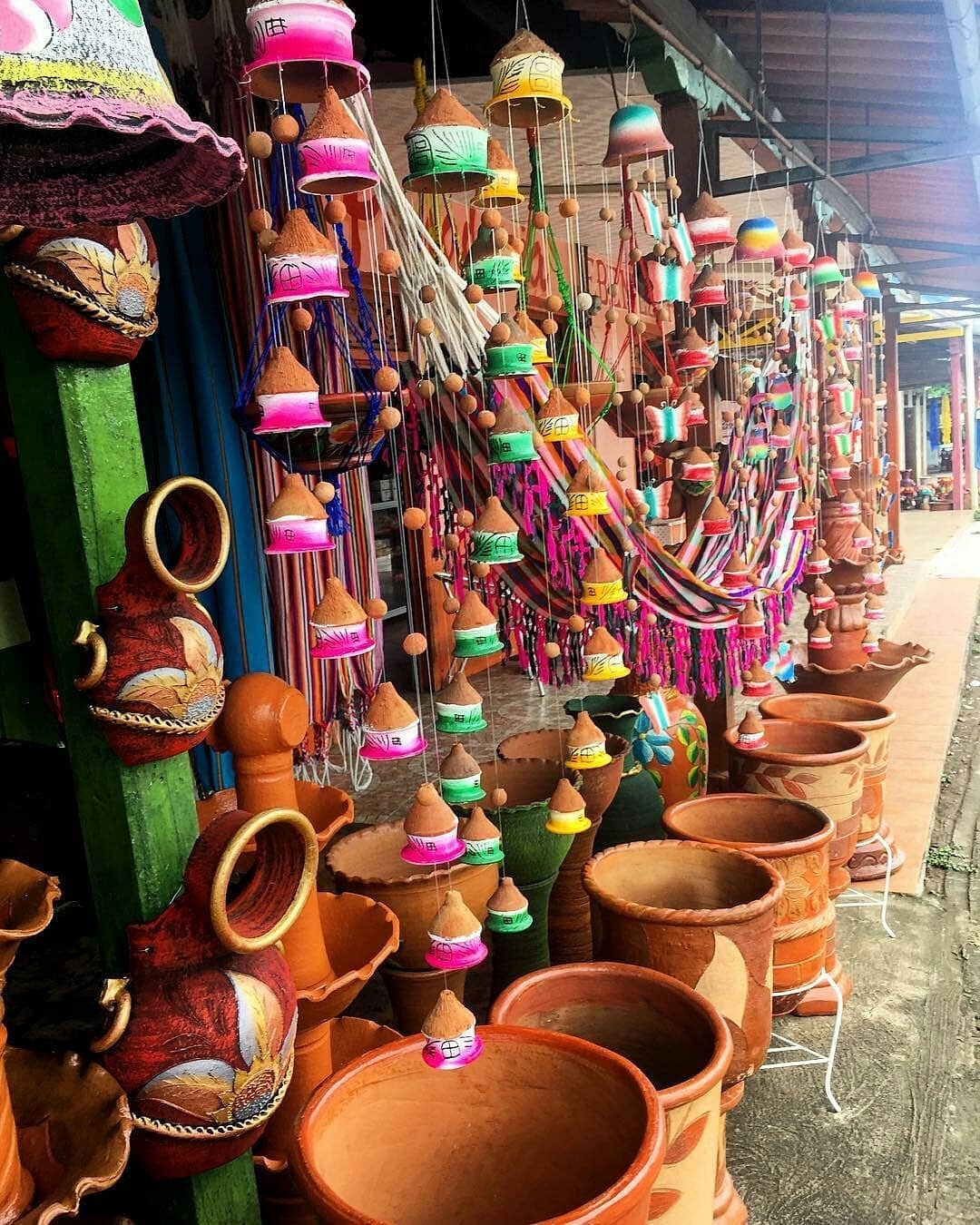When leaving Chitre on the way to Divisa or vice versa, houses made of thatch can be found along the highway that are still well kept over time, and where handicrafts, bread, native sandwiches, Panamanian-flavored food restaurants and panamanian products can be found.

A Village of Talented Potters
This artisan display is where the town of La Arena is located, recognized for its great potters who create wonderful works of art with clay, pride of Azuero’s culture and traditions. This picturesque town is located in the Province of Herrera, a few minutes from Chitre the ceramics made by its artisans are of great prestige nationally and internationally.
The vases, the jars, the pots, and many consistency and a uniform burn to the handmade pieces that were burned. In 1931, the teacher Diana Julia Chiari arrived in town, with whom the pot industry began. Born to Chitrean parents, she moved to Panama City at an early age, however, she continued traveling to La Arena on her vacations where she took pottery classes under the teachings of Mrs. Pepita, Lina Chunga and Golla.
Upon arriving at La Arena as a teacher, she asks the mothers of the students to also go to the school to teach them, together with the students, the art of working with clay. This allows the construction of a domeless oven in the school, making it available to the women in town.

Continental Distinction for its Crafts
At the end of the 1980s, the town of La Arena was declared the most artisan town on the American continent. An important distinction made by the Organization of American States (OAS). In this distinction, the same organization awarded a medal to the ceramic master Toribio Ruiz, a native of this town, the main pottery maker in this town. The reason why a street in La Arena today bears his name.
Women, Pioneers in the Art of Pottery
Before the introduction of pottery in La Arena, the main activity was agriculture and, to a lesser extent, livestock. However, women contributed to the household economy; and they were the first to practice the art of pottery. At this stage they carried out this work, while the men dedicated themselves to selling or exchanging for products the art that consisted of casseroles, all-purpose pots, jars, pitchers, flower pots, etc.
The women worked sitting on the ground, burning them directly in the open air, using firewood and cow dung from the pastures as fuel to give consistency and a uniform burn to the handmade pieces that were burned.

Pot Industry in La Arena
In 1931, the teacher Diana Julia Chiari arrived in town, with whom the pot industry began. Born to Chitrean parents, she moved to Panama City at an early age, however, she continued traveling to La Arena on her vacations where she took pottery classes under the teachings of Mrs. Pepita, Lina Chunga and Golla.
Upon arriving at La Arena as a teacher, she asks the mothers of the students to also go to the school to teach them, together with the students, the art of working with clay. This allows the construction of a domeless oven in the school, making it available to the women of the village.
First National School of Pottery
All of this motivates Mrs. Malvina Galindo de Arosemena, wife of President Juan Demostenes Arosemena, to travel twice to Mexico with a scholarship
to improve her knowledge and techniques in decoration, as well as handling the lathe and glazing techniques. As a result, in 1938 the President of the Republic of Panama built the pottery school.
The teacher Diana Julia introduces for the first time in the community the use of the lathe, the oven without a dome and the mold system. However, they embarked on the construction of an electric oven following a model imported from Mexico, operated in Chitre, since La Arena did not had electricity. The most outstanding students were Angel Calderon and Toribio Ruiz, as well as Gilberto Chiari, teacher Diana’s brother.
In 1967, the National School of Pottery ceased to exist and the La Arena Center attached to the S.E.N.A.P.I. (National Service for Crafts and Small Industries) was created in Chitre.

Tradition Breathed in Every Corner
In La Arena, men and women can be seen very early in the morning kneading the clay with the help of the wheel, giving shape to the earth of a strong reddish color. More than a hundred families have raised their homes, have graduated their children, with this noble work.
Proudly for the sand makers, today they have three large industrial workshops such as: Murillo Ceramics, Calderon Ceramics, Marcelino Ceramics. In addition, there are more than one hundred private workshops in the homes of these humble sand-making families.







